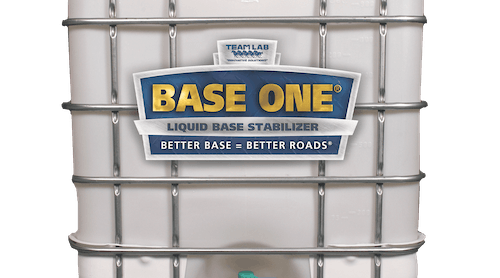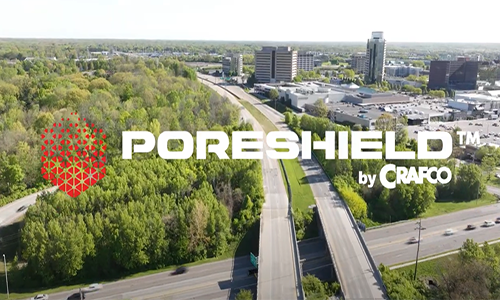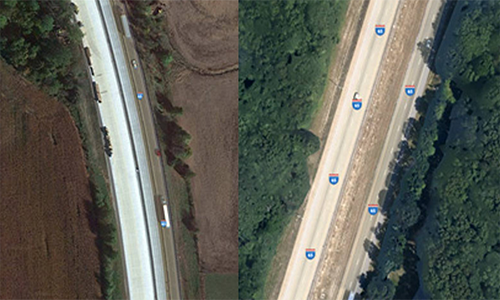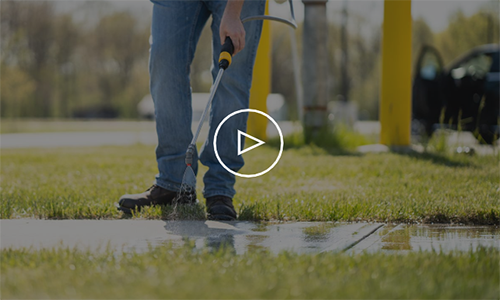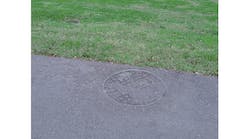By Mark Ludewig, Contributing Author
Traffic control services are essential to any road or bridge renovation project, and with thousands of contracts now connected to the bipartisan Infrastructure Investment and Jobs Act (IIJA), demand for these services is almost certain to be at an all-time high going forward.
For anyone involved in safety decision-making regarding road and bridge work, it is important to make sure the following elements of comprehensive traffic control are in place to protect people and progress for the duration of the job.
Safety in the Spotlight
The latest Report Card for America’s Infrastructure from the American Society of Civil Engineers (ASCE) paints a less than ideal picture of our country’s roads and bridges. The report grades the average condition of America’s over 4.6 million miles of public roadways as a D.
This is a consequence of many factors, including increased traffic congestion, insufficient funding for repairs and an all-time high in the number of deficient bridges (46,154) considered to be in “poor” condition. The report also states that nearly 241,000 bridges need preservation work of some type with 42% of all bridges being over 50 years old.
Since the IIJA became law in 2021, more than $185 billion in federal money has been made available and is headed to local governments, with thousands of specific projects identified for funding. Many firms contend that the projects announced in 2022 are only a fraction of what is to come.
Enter the need for traffic control services to design, implement, and monitor a proliferation of imminent work zones for optimal safety. And with a host of new technologies making the job easier, there is even more for project decision-makers to know.
Planning Ahead
Be it a highway expansion or bridge repair, every project must start with a traffic control plan specific to the work site that details current conditions, determines safe setup, monitoring and removal procedures, assigns appropriate personnel and equipment to the job, and meets applicable laws and standards.
Typically, a certified traffic management engineer will coordinate and delegate such a plan. These engineers are well-versed in the latest methods of analyzing capacity and flow to achieve the most efficient movement of vehicles on roadways.
A risk management document should be part of the plan. This develops a cohesive strategy that can help to prevent accidents in the first place or contain the damage when an accident occurs.
The risk management document includes list of potential risks, an outline of roles and responsibilities, clear communication protocols and steps to take should the unexpected occur. All parties—the engineering or construction firm coordinating the work, any state or local agencies involved as well as traffic control services professionals—should inform the scope of the document and make updates accordingly as work progresses or conditions change.
Security is magnified by cooperative efforts that bring risk factors into sharper focus. Clear communication between engineers, decision-makers, city officials, including law enforcement, and the public is needed to arrive at the safest outcome for road and bridge construction projects.
Training is Crucial
Proper training equips field crews with the knowledge and personal duty to practice work zone safety. Traffic control plans should prioritize steps for training and education activities that teach constant alertness and cautious driving habits in work zones.
Comprehensive coursework, real-life scenario modeling, and peer-to-peer coaching help to achieve a higher safety standard that can often exceed federal and local requirements. Every member of the field team assigned to a work site should have completed work zone safety training, including first aid and CPR, and for those who monitor the traffic, certified flagger training, as well.
The U.S. Department of Transportation Federal Highway Administration (FHWA) maintains a robust work zone management program offering nationally available training programs as well as links to state-specific opportunities.
For anyone operating a vehicle in a work zone, state-specific DOT training is required. Safety decision-makers may also consider advanced driver training and tools for their fleets. These programs can help to develop skills such as anticipation, decision-making, and vigilance, all of which can help drivers avoid potential accidents. Additionally, advanced driver-assistance technologies can help motorists to be more aware of their surroundings and maintain better control of their vehicle. These technologies tend to incorporate lane-keeping assistance and adaptive cruise control—features proven to help improve driver safety.
Furthermore, the increased confidence a driver develops because of a training program can lead to improved mileage efficiency, fewer vehicle repairs, a more professional image for the company, and less risk of an unfriendly DOT audit.
The Benefits of Technical Innovation
All work zones require some combination of human expertise and technology. Field crews and the public should be protected using appropriate safety equipment in work zones as outlined by the FHWA’s Manual on Uniform Traffic Control Devices (MUTCD) for Streets and Highways, which defines the standards used by road managers nationwide to install and maintain traffic control devices.
These include cones, barricades, gates, warning lights, crosswalks, and road signs in combination with traditional traffic control methods administered by certified flaggers.
Recently some new tools and technologies have started to appear on America’s roadways under repair. Across the country, traffic control is already benefiting from a mix of innovations that includes:
Temporary Portable Rumble Strips (TPRS) are an overlooked solution for managing traffic flow. But they are now required by many states in work zones. These plastic or polymer strips create a groove-like effect over asphalt or concrete surfaces and are relatively inexpensive compared to traditional traffic control measures. Many of these strips can also be recycled when their use is over.
Cushioned impact attenuators are increasingly used to protect motorists from hazards—not just in permanent locations but also in work zones as temporary installations. These portable bidirectional attenuators can be attached to most types of roadside barriers to automatically regulate the stopping force exerted on a vehicle as well as lessen the risk of a vehicle rebounding after impact. National Cooperative Highway Research Program (NCHRP) crash performance testing also shows cushioned impact attenuators are breaking new ground in significantly lowering vehicle deceleration rates and reducing impact forces.
Automated Flagger Assistance Devices (AFADs) are among the latest technological advancements for managing traffic in work zones. The most beneficial aspect of using AFADs is that the traffic can be monitored by a human operator standing at a safe distance or, in some cases, without the need for an operator to be present. AFADs are equipped with sensors that detect oncoming vehicles and deploy the flagging process accordingly. This can also help to reduce the total cost of controlling work zone traffic, thereby making it more budget-friendly for businesses.
Adding an Extra Layer of Security
It is essential to have a safe and efficient process for moving vehicles and pedestrians around construction sites to quickly complete the project and avoid unnecessary delays or accidents.
Engineering and construction firms can seek the assistance of a professional traffic control services provider when making road and bridge repairs.
These professionals know the rules and regulations for local projects and tend to be better equipped to handle any issues that may arise during the construction process, such as unexpected spills or the need to modify the work zone setup should conditions change. Furthermore, by utilizing the expert services of a professional traffic control services provider, firms can prevent fines and avoid problems associated with regulatory noncompliance.
Preventing accidents in work zones is everyone’s responsibility. Meeting a high standard for safety can be demanding but rewarding in the knowledge that people, property, and progress are better protected.
Repairing America’s roads and bridges will take decades and result in a multitude of work zone setups requiring the careful consideration of traffic control specialists. Safely navigating this era of infrastructure renewal can be made easier through attentive planning, diligent training and the effective deployment of people and technologies that work in tandem to protect crews and the public. R&B
Mark Ludewig is the Vice President of Safety for AWP Safety, a leader in professional traffic management.


